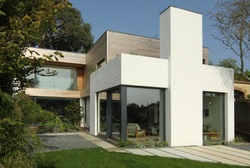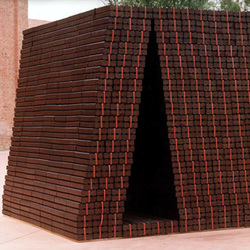Recycling Brick
Reclaimed Brick
One of our most versatile building materials, bricks have been used in construction for millennia. Recycling them is nothing new, but with the growing standardisation of brick manufacture in Britain, constructing with reclaimed bricks is a simple and environmentally friendly way of building.
The recycling process itself has a low carbon impact and consists of passing the bricks through a cleaning machine to remove the mortar or similar bonding agent. Cleaned bricks that are not overly damaged can be reused replacing more pollutant newly made bricks.
The recycling process itself has a low carbon impact and consists of passing the bricks through a cleaning machine to remove the mortar or similar bonding agent. Cleaned bricks that are not overly damaged can be reused replacing more pollutant newly made bricks.
Case Study : Corkellis House

You may recognise designer Kathryn Tyler’s Corkellis House featured on Grand Designs in October. The reclaimed brick walls with their innate roughness, blend surprisingly well with the sleek lines of this building. Its textural quality compliments that of the exterior timber cladding which in turn aides in breaking up the large expanse of flat surfaces.
Just clay?
Who says bricks need to be made from clay? Created by Tom de Paor of de Paor Architects for the 2000 Venice Biennale, ‘Turf House’ is constructed from 40,224 peat briquettes which are strapped with polypropylene tape into 1,676 separate bails. The compressed peat typically used as a fuel source has been inventively expropriated for construction purposes in this modest but sculptural structure. Contained within are small passageways connecting the exterior to the central open courtyard in the middle.
The future
(fuuutuuuurrrree future ooo future) of bricks?

Polli-Bricks are a fusion between modern technology, recycling and... bricks. (Surprise!)
This invention takes the modular potential of the brick and reinvents it as a sustainable building material recycled from waste. As a construction material it possess numerous benefits such as thermal performance, low carbon footprint, versatility and interestingly, an aesthetic quality which is gained through the use of light thanks to the translucent nature of this material. Watch this video for more:
